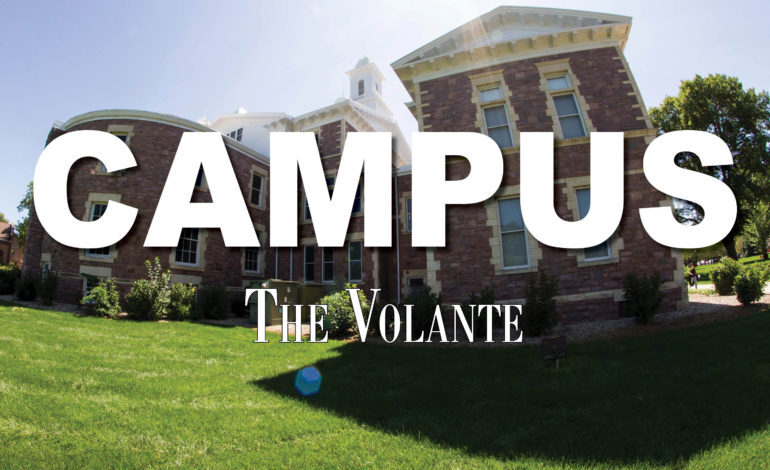
Revitalized IAIS partners with tribes, seeks to teach students respectful research practices
Originally created in 1955, the Institute of American Indian Studies (IAIS) is undergoing revitalization efforts to reestablish the program after funding issues in 2008.
Elise Boxer, the coordinator of Native American studies and director of the institute, said the institute has still existed at USD, but its activity and focus has dramatically changed over the past decade.
“Under President Gestring’s leadership, there’s now efforts … to reestablish (the institute) not just here in the state but in the region and nationally,” Boxer said. “There has always been a commitment by USD towards Native American Studies as a discipline.”
The institute, Boxer said, will refocus on some of its original efforts, such as the collection of oral histories. The IAIS will also work to establish relationships with the tribal nations in South Dakota.
Damon Leader-Charge, a Sicangu Oglala Lakota and Director of Tribal Outreach for the institute, said in getting momentum for the revitalization for the institute, he met with leaders of the Yankton Sioux Tribe and attended the Great Plain Tribal Chairmen’s Association meeting to discuss partnerships with USD. These meetings, Leader-Charge said, provided direction for the institute.
“We want to see how we can partner and collaborate, and it’s critical to build that trust prior, so that’s what we were doing, and it went very well,” Leader-Charge said.
There are 574 federally recognized tribes in the US and nine in South Dakota, which Leader-Charge said are often thrown into a melting pot and treated the same, despite their differences.
“That’s why we want to take our time and be cautious and be respectful, because with those nine tribes, they’re similar, but they’re different. They all break down differently, (and) all teachings are to be respected,” Leader-Charge said.
In January, the IAIS will be moved to the second floor of Old Main. Boxer said the move is significant not only because Old Main is a visible space on campus but also because it’s home to the Oscar Howe Gallery.
Eventually, the institute will take over the hosting of cultural workshops and the Joseph Harper Cash lecture from Native Studies. Boxer also said she hopes to invite native artists to campus for events in the future, depending on the state of the pandemic.
The institute will also bring in postdoctoral fellow John Little, a member of Standing Rock Sioux Tribe, to offer classes. Little will teach “American Indians in Film” during the spring, Boxer said.
“We’re working on other classes for him to teach in the fall as well,” Boxer said. “One of the things with a postdoctoral fellow is that they’ll be able to offer additional classes beyond what we offer through Native American Studies at this moment.”
Leader-Charge said a long-term goal of the institute will be to host a tribal summit, so students can get the guidance and advice of leaders from local tribes.
The institute will be able to connect students and faculty to its resources and then oversee and facilitate research regarding indigenous people, Boxer said. One area Boxer is especially interested in, she said, is looking at how to teach students to research in a culturally responsive manner.
“The other part of it is to ensure that what we’re doing at the Institute is done not just in a culturally appropriate way but also grounded in indigenous theory and methodology in regards to research,” Boxer said.
Boxer said she encourages students to think about how indigenous worldviews can help them make sense of world issues. She said she thinks it’s important to understand the world through an indigenous lens because it offers another perspective and provides potential solutions for the future.
“That to me is why (the institute) is significant,” Boxer said. “If anything, it’s just going to highlight the work that’s already being done by tribal communities, and various other organizations as well.”
Boxer said she is excited by both the university’s commitment to the institute and the prospect of building relationships with the tribal nations in South Dakota. She said having the institute is important because USD is built on indigenous land, and its goals are a recommitment to that fact.
“We’re interested in making sure that we do this the right way, in a way that’s respectful and also reciprocal with tribal nations,” Boxer said. “Rather than it just being a one-way ‘what can tribes do for us,’ it’s really looking at this more holistically and looking at how we can have and build a continued relationship.”


